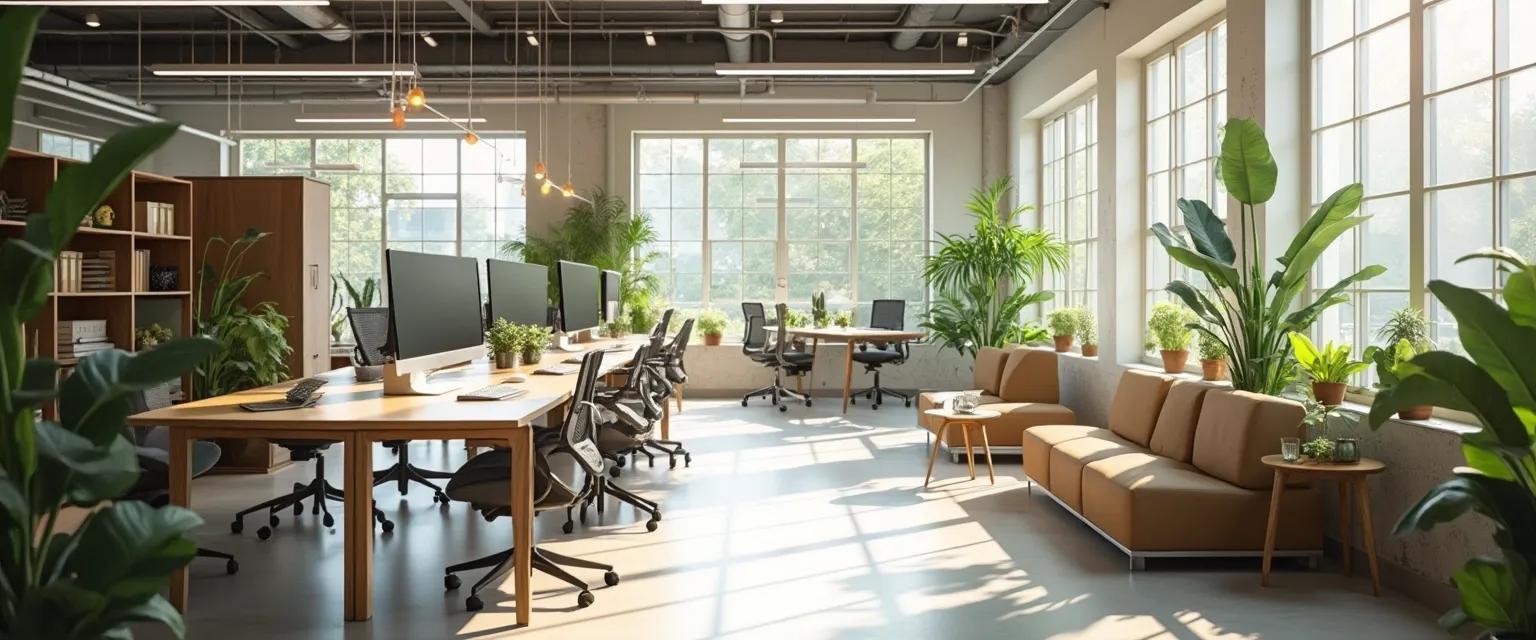7 Workspace Design Innovations That Boost Wellness and Wellbeing in the Workplace
The connection between workspace design and wellness and wellbeing in the workplace has never been more important. As employees spend roughly a third of their lives at work, the physical environment significantly impacts their mental health, productivity, and overall satisfaction. Poor workspace design isn't just an aesthetic issue—it directly contributes to stress, physical discomfort, and reduced focus that can cost organizations dearly in terms of absenteeism and turnover.
Research shows that companies investing in thoughtful workspace design see substantial returns—with some reporting up to 15% productivity increases and 50% reductions in stress-related absences. The science is clear: our surroundings affect our mental clarity and cognitive function in profound ways. By implementing these seven evidence-based design innovations, organizations of all sizes can dramatically improve wellness and wellbeing in the workplace without necessarily breaking the budget.
Essential Workspace Design Elements for Enhanced Wellness and Wellbeing in the Workplace
The foundation of effective wellness and wellbeing in the workplace starts with fundamental design elements that address our basic biological needs. First among these is natural lighting, which plays a crucial role in regulating our circadian rhythms. Workspaces designed to maximize daylight exposure help employees maintain healthy sleep patterns and boost vitamin D production, directly improving mood and energy levels.
Ergonomic furniture represents another cornerstone of workplace wellbeing. Adjustable chairs, standing desks, and proper monitor positioning prevent the physical strain that leads to chronic pain and discomfort. Organizations implementing comprehensive ergonomic programs report up to 40% reductions in musculoskeletal disorders and related absences.
Biophilic design—incorporating natural elements like plants, wood, and stone—creates a powerful connection to nature that reduces stress hormones and increases concentration. Even simple additions like desktop plants can improve air quality while reducing workplace anxiety by up to 37%, according to recent studies.
Sound management strategies complete these essential elements by addressing the often-overlooked acoustic environment. Open offices typically expose employees to 70+ decibels of noise, significantly impairing cognitive function. Implementing sound-absorbing materials, white noise systems, and designated quiet zones helps minimize distractions and the resulting mental fatigue.
Advanced Workspace Innovations That Transform Workplace Wellness and Wellbeing
Beyond the basics, forward-thinking organizations are implementing flexible workspace configurations that accommodate different work styles and tasks. This approach recognizes that employees need varying environments throughout the day—from collaborative spaces for team projects to private areas for focused work. This flexibility empowers employees to choose the setting that best supports their current task, significantly enhancing both wellbeing and productivity.
Dedicated relaxation zones represent another powerful innovation in wellness and wellbeing in the workplace. These areas—designed specifically for mental restoration—provide employees with spaces to decompress, meditate, or simply take a break from cognitive demands. Companies implementing these zones report improvements in employee stress management and workplace confidence.
Technology integration, when thoughtfully implemented, supports rather than hinders wellbeing. Smart lighting systems that adjust throughout the day, air quality monitors, and wellness apps can create environments that respond to human needs. Even organizations with limited budgets can implement gradual improvements—starting with low-cost solutions like repositioning desks for better light exposure or creating simple quiet zones with room dividers.
Measuring the Impact of Workspace Design on Employee Wellness and Wellbeing
To maximize the return on workspace design investments, organizations should track key metrics including absenteeism rates, employee satisfaction scores, and self-reported stress levels. Regular pulse surveys provide valuable feedback on which design elements are most effective for your specific workforce.
The long-term benefits of prioritizing wellness and wellbeing in the workplace through thoughtful design extend far beyond immediate productivity gains. Organizations that create human-centered workspaces build stronger company cultures, improve talent attraction and retention, and ultimately create more sustainable business models.
Ready to transform your workspace into an environment that truly supports employee wellbeing? Start by assessing your current design against these seven innovations and identify which improvements would provide the greatest impact for your team. Remember that even small, incremental changes to workspace design can significantly enhance wellness and wellbeing in the workplace—creating environments where people don't just survive their workday but truly thrive.




